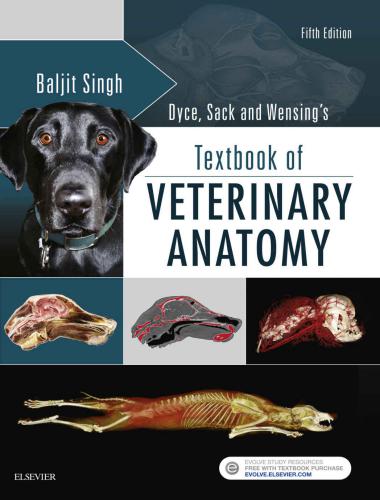Gain the working anatomic knowledge that is crucial to your understanding of the veterinary basic sciences with Dyce, Sack, and Wensing’s Textbook of Veterinary Anatomy 5th Edition. By focusing on the essential anatomy of each species, this well-established book details information directly applicable to the care of dogs, cats, horses, cows, pigs, sheep, goats, birds, and camelids – and points out similarities and differences among species. Each chapter includes a conceptual overview that describes the structure and function of an anatomic region, and new diagrams facilitate comprehension of bodily functions.
Dyce, Sack, and Wensing’s Textbook of Veterinary Anatomy 5th Edition

There are many current trends that impact the teaching of veterinary anatomy. These trends, including an increase in the volume of veterinary clinical and biomedical information, have resulted in reduced allocation of time to educate students in veterinary anatomical sciences in general. Veterinary embryology has nearly been eliminated from the veterinary medical curricula. The time in veterinary curricula to teach histology has also been reduced significantly. There however is resurging realization that these trends are not fostering development of sufficient foundational knowledge of veterinary anatomy and an integrated set of concepts for the students.
Related Book: Introduction to Animal and Veterinary Anatomy and Physiology 5th edition
For example, the growth in the use of imaging modalities in veterinary medicine has created a need for better education in veterinary anatomy. Also, reduction in time devoted to the instruction of veterinary anatomy is stimulating interest in more integrated teaching of anatomy, histology, and embryology; the Textbook of Veterinary Anatomy has been at the forefront of such integrated instruction of veterinary anatomy.
The 5th edition of the Textbook of Veterinary Anatomy introduces many changes and makes a gentle pivot to indicate the future direction of the book. In preparing this edition, I have had many discussions with students, and some with fellow teachers. The major changes are as follows:
• significant editing of the text to remove many redundancies;
• removal of text that is not germane to the veterinary medical student;
• addition of nearly 100 new figures;
• addition of many figures at the sub-gross level to create a link between the gross anatomy and histology;
• addition of a new chapter on camelids;
• creation of more than 120 highlighted text boxes to make to easier to grasp important concepts and some clinical features;
• addition of new tables to summarize information;
• creation of a new box called Comprehension Check at the end of each chapter to facilitate group discussion and practice.
Instant Download For Paid Membership: –
